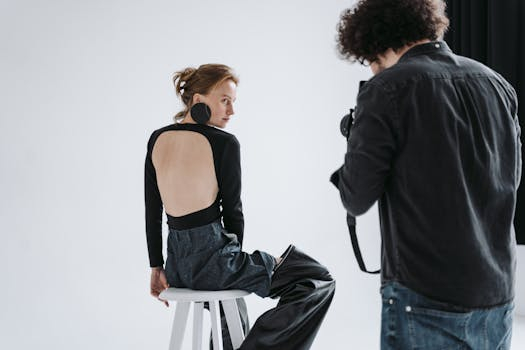The Rise of Inclusive Runway Shows
In recent years, the fashion industry has faced criticism for its lack of inclusivity on the runway. However, in a refreshing shift, designers and fashion houses are now embracing diversity and inclusivity by featuring a range of shapes, sizes, ages, and ethnicities on their runways. This rise of inclusive runway shows marks a significant turning point in the fashion world, one that many hope will continue to gain momentum and bring about lasting change.
The Past: Lack of Inclusivity on the Runway
For far too long, the fashion industry has been criticized for its narrow definition of beauty. In the past, models on the runway were predominantly white, thin, and conventionally attractive. This single-minded idea of beauty not only excluded a vast majority of people but also created unrealistic and unhealthy standards for young girls and women to aspire to.
The lack of inclusivity on the runway also extended to size diversity. Plus-size models were practically non-existent on the catwalk, and those who did make an appearance were often dressed in ill-fitting and unflattering clothing. This exclusion of plus-size women reinforced the damaging idea that only one body type is acceptable in the fashion industry.
The Present: A Shift Towards Inclusivity
Thankfully, the fashion industry is slowly but surely moving towards a more diverse and inclusive future. Designers and brands are taking the lead in this movement by featuring models from different backgrounds, sizes, and ages on their runways. This shift towards inclusivity is evident in influential fashion events, such as New York Fashion Week and London Fashion Week, where diversity has become a top priority.
One of the pioneers in promoting diversity on the runway is designer Christian Siriano. His runway shows have consistently featured models of different sizes, ages, and races, earning him praise and recognition as a body-positive fashion advocate. Other designers, such as Prabal Gurung and Chromat, have also made inclusivity a central theme in their shows, casting a diverse range of models to showcase their collections.
The Impact: Beyond the Fashion Industry
The rise of inclusive runway shows is not only affecting the fashion industry but has also had a significant impact on society as a whole. By featuring a diverse group of models on the runway, designers are challenging long-held beauty standards and promoting self-acceptance and body positivity. This representation and visibility of a variety of body types can inspire young people to feel confident and embrace their own unique features.
In addition, the fashion industry’s shift towards inclusivity has also sparked conversations about diversity in other areas, such as advertising and media. This ripple effect has helped to bring attention to the importance of inclusivity and representation in all aspects of society.
The Future: A Continued Push for Inclusivity
While there have been significant strides towards inclusivity on the runway, there is still much work to be done. The fashion industry must continue to promote diversity and inclusivity by featuring models of all shapes, sizes, and backgrounds in their campaigns and shows. This commitment to inclusivity will ensure that future generations see themselves represented on the runway and feel more accepted and included in the fashion world.
In conclusion, the rise of inclusive runway shows is a welcome and much-needed change in the fashion industry. By embracing diversity, designers have not only challenged traditional standards of beauty but have also made a positive impact in society. As we move towards a more inclusive future, it is essential for the fashion industry to continue to break barriers and celebrate diversity on the runway and beyond.










